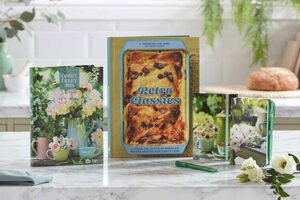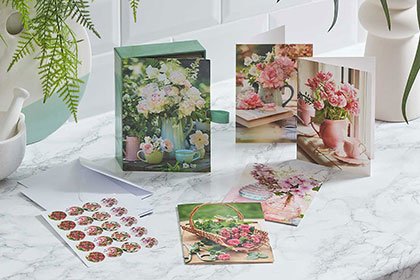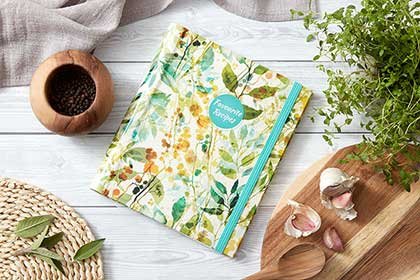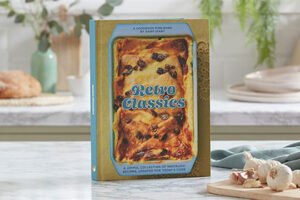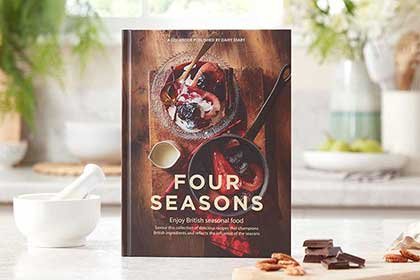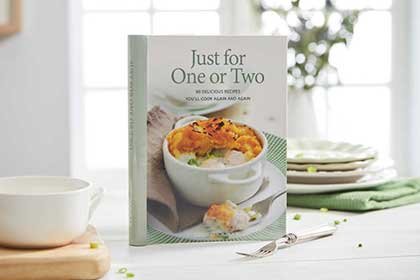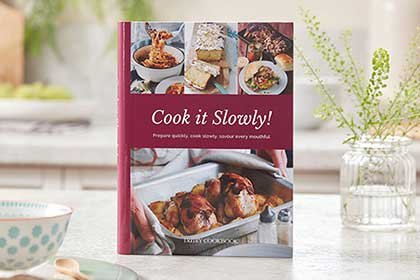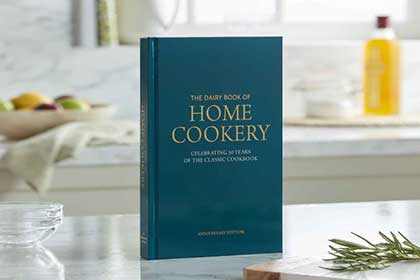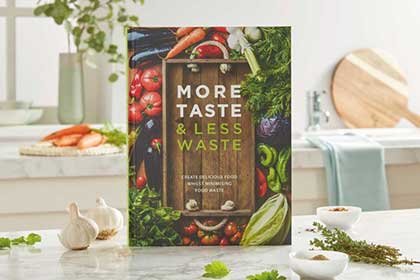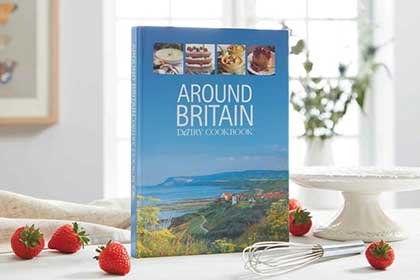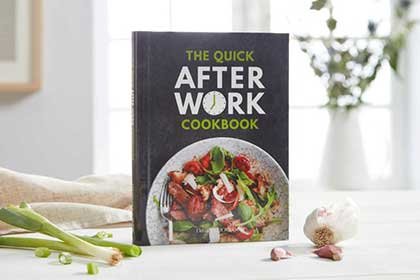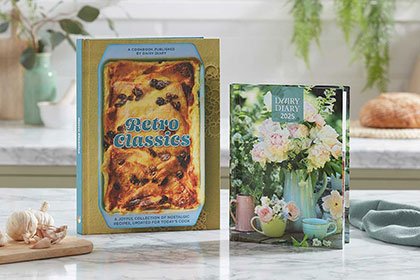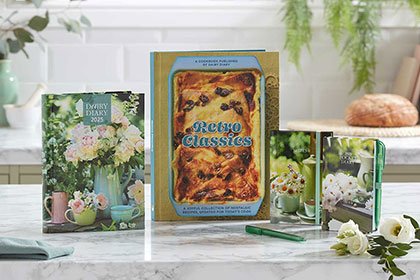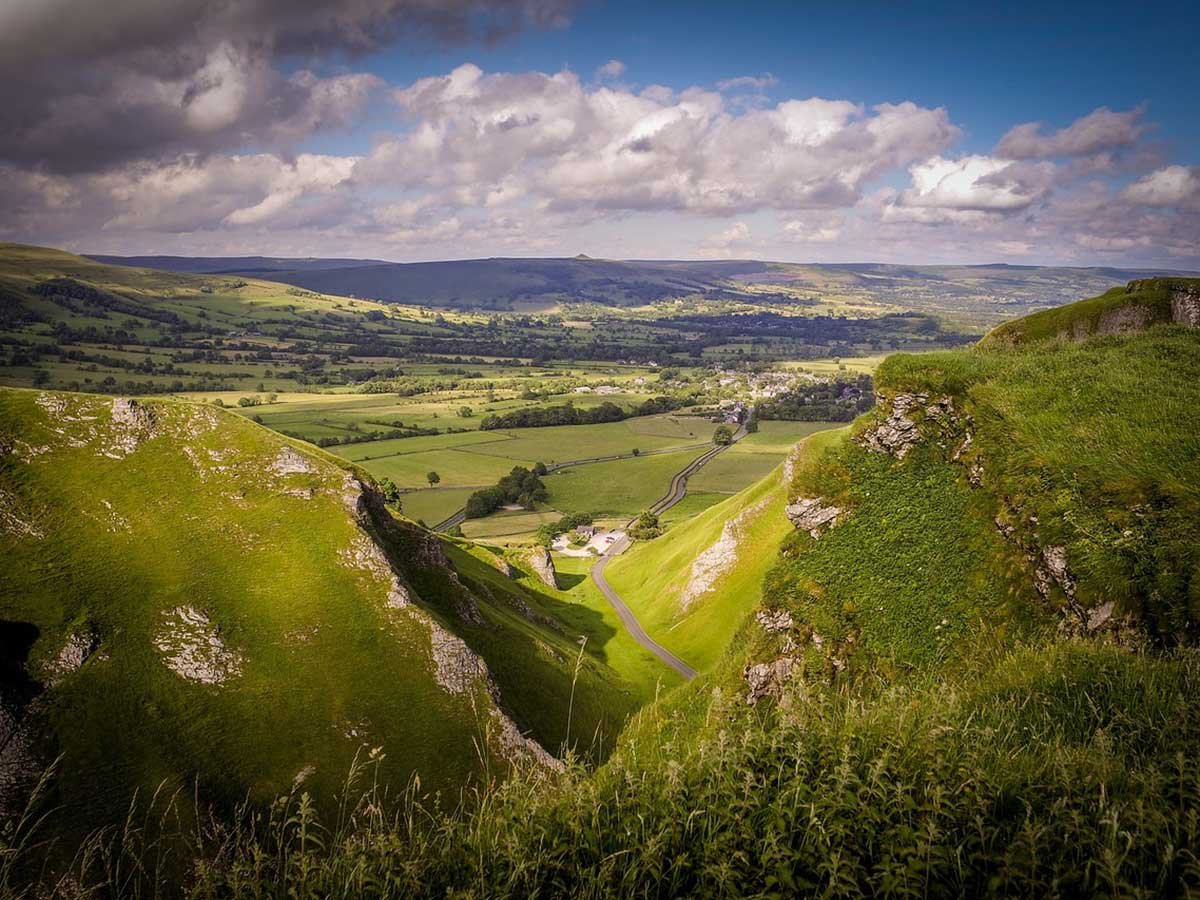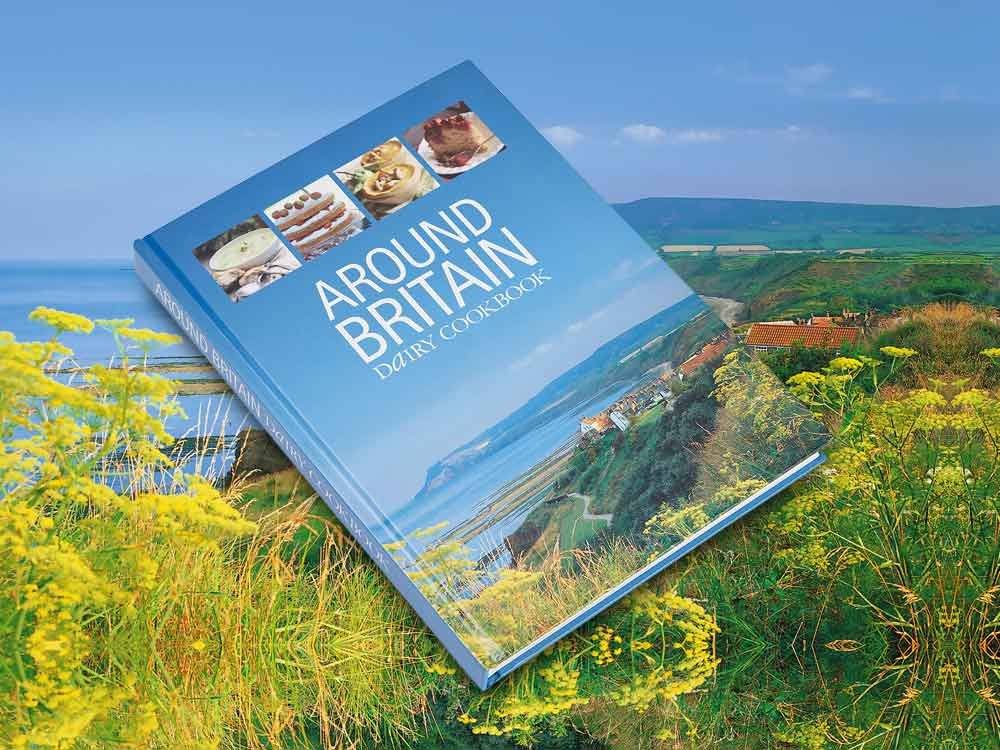One of the most enjoyable books I’ve worked on has got to be the beautiful Around Britain Cookbook
We shot the images of the iconic flowers to denote each region on a glorious summer’s day in my garden. And many of the recipe shots were also taken outside in Steve, our photographer’s, stunning garden.
This wonderful book takes you on a tour around the regions of Britain, explaining its culinary heritage and showcasing gorgeous regional recipes.
Here, I’m sharing my region – the North West, which includes the Lake District, Cheshire and Lancashire, taking in the great cities of Liverpool and Manchester. From the tarns of Cumbria to the grassy plains of Cheshire, there is a wealth of fantastic scenery and superb food.
Wet Nellie has to be my favourite recipe from this region – what a wonderful name.
Try this and other regional recipes in this month’s recipe collection: 8 Regional British Recipes

Around Britain Cookbook North West Regional Guide
The North West includes the Lake District, Cheshire and Lancashire, taking in the great cities of Liverpool and Manchester. From the tarns of Cumbria to the grassy plains of Cheshire there is a wealth of fantastic scenery and superb food.
Most of the traditional dishes are clearly developed to be suitable for feeding hard-working people who have to cope with a bracing climate.
Many meat dishes would be made with lamb because so many sheep graze on the hills of this region. A typically robust meal would be Lancashire hot pot, a lamb stew incorporating the potatoes and other root vegetables grown so widely in the area.
Similarly appealing to the thrifty is tripe, which is a cow’s stomach lining, usually served with onions, and black pudding, an earthy dish made from blood and oatmeal with many variations, all claiming to be the best.
The famous long Cumberland sausage is another dish that uses the less appealing parts of an animal so that nothing is wasted.
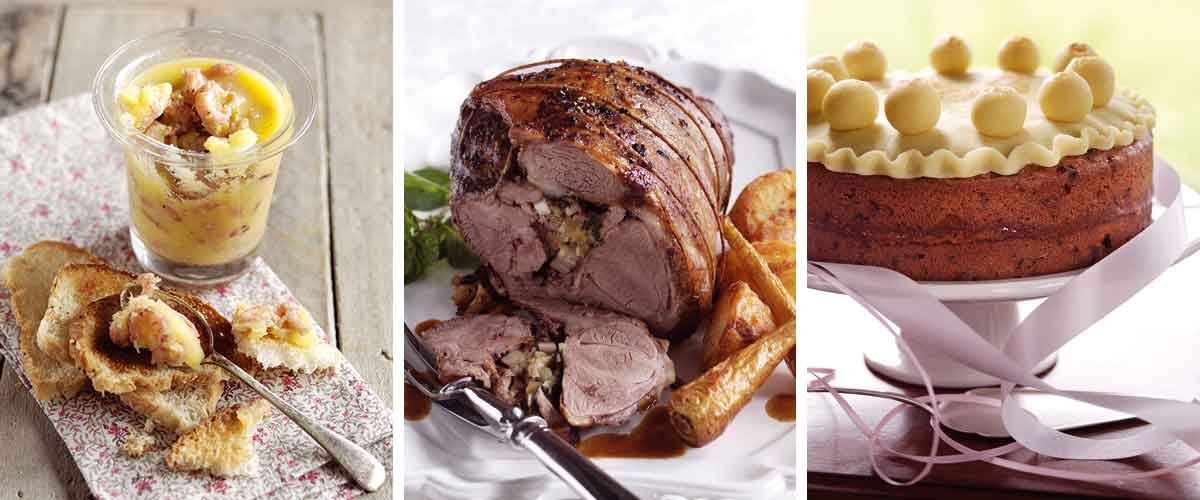
The sea, lakes and rivers provide more delicate flavours, such as the shrimps of Morecambe Bay (page 40) and stuffed herring and trout, which are caught on the line and increasingly farmed in the region. A real local speciality is the mild-flavoured char (page 105), a relative of the salmon, which got left behind in the Lakes after the Ice Age.
This region also boasts two of the finest British cheeses: Cheshire and Lancashire. White, crumbly Cheshire is mentioned in the eleventh-century Domesday Book and was the only cheese that the British Navy would stock on board in the eighteenth century. Lancashire is creamier and is regarded as one of the best cooking and, especially, toasting cheeses as it melts into a velvety mass when heated.
If you’re fond of a cheese sandwich, large wholemeal flour bread rolls, or baps, are popular in the region, being an ideal way to eat in a hurry. They are also known as ‘barm cakes’ after a Lancashire word for the froth on liquid that contains yeast. Similarly long on history are Eccles cakes, small, flat, raisin-filled pastries, which date from at least the eighteenth century. They are closely related to the larger but equally convenient sweet, hand-held and fruity Chorley cake.
Another great Northern comfort food is gingerbread, closely identified with the Lake District village of Grasmere.
It is usually a crisp spicy biscuit and therefore offers a contrasting texture to the more moist parkin cake that originates across the Pennines in Yorkshire.
Simnel cake (page 178) is now closely identified with Easter, but one early version of it was known as Bury simnel cake at a time when it was traditionally a gift taken by serving girls returning home on Mothering Sunday. Its link with Easter probably stems from the 11 pieces of marzipan used to decorate its top – one for each true disciple.
Finally, have you ever wondered where the Liverpool term ‘scouser’ comes from? It seems to be from a popular Merseyside dish rather like Irish stew, which was similar to a Scandinavian dish known as lobscaus. The stew became known as ‘scouse’, and use of the name broadened to mean a local person.
The Lakes, Lowry and Liverpool
The North West has inspired some of England’s best-known poetry, painting and music. The postcard-perfect mountains and tarns of the Lake District attract walkers and lovers of beautiful scenery from around the world. The landscape is fundamental to the romantic poetry of William Wordsworth, who lived here for over eight years. It was also later home to Beatrix Potter, author and illustrator of the charming children’s stories that introduced us to Peter Rabbit and his friends.
 By way of contrast, the industrial landscape of Manchester with its smoking towers forming the horizon was the setting for many paintings by L. S. Lowry. Lowry lived and worked as a rent collector and cashier in Salford, using his spare time to paint scenes of local life populated by his distinctive ‘matchstick men’ in drab urban colours. Although he painted in other styles, too, it was these pictures that eventually earned him fame towards the end of his life before he died in 1976.
By way of contrast, the industrial landscape of Manchester with its smoking towers forming the horizon was the setting for many paintings by L. S. Lowry. Lowry lived and worked as a rent collector and cashier in Salford, using his spare time to paint scenes of local life populated by his distinctive ‘matchstick men’ in drab urban colours. Although he painted in other styles, too, it was these pictures that eventually earned him fame towards the end of his life before he died in 1976.
By then The Beatles had also made their contribution to popular culture with a huge catalogue of music that is still much loved. The extraordinarily varied songs of John Lennon and Paul McCartney, combined with the experimental leanings of guitarist George Harrison and the rock-solid drumming of Ringo Starr, reflected the changing lives of four Merseyside ‘mop tops’ who became the world’s greatest pop stars in the 1960s and led the way in innovating new ways to write and record music.

Head of Dairy Diary; I’m passionate about producing high quality products that our customers will cherish. I’m also a mum of three and I enjoy cooking, walking, gardening and art with my family, as well as lino printing (if I find time!)




